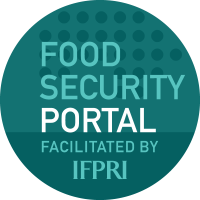L'indice d'autonomisation des femmes dans
l'agriculture (WEAI), lancé en 2012 par l'institut international de recherche
sur les politiques alimentaires (IFPRI), l'Oxford Poverty and Human Development
Initiative (OPHI) et l'Initiative Feed the Future de l'Agence des États-Unis
pour le développement international ( USAID), est le premier instrument complet
et standardisé permettant de mesurer directement l'autonomisation et
l'inclusion des femmes dans le secteur agricole. En réponse à la demande d'un
instrument pour mesurer l'autonomisation des femmes dans des contextes
spécifiques da un projet, le WEAI au niveau projet (ou pro-WEAI) a été
développé. Le pro-WEAI propose des modules spécialisés pertinents au niveau
projet ainsi que des modules optionnels adaptés aux programmes d'élevage, de
nutrition et de santé et d'inclusion sur le marché. De plus, le pro-WEAI inclut
des protocoles qualitatifs pour nuancer les résultats quantitatifs.
Nous avons développé ce cours en ligne pour
former des chercheurs et des praticiens sur tous les aspects du pro-WEAI, de
son fond à son application pratique dans un contexte de projet. Le cours
complet est composé de six parties, commençant par la partie sur les notions de
base, qui doit être terminée avant de s'inscrire à d'autres parties du cours.
Public cible:
Cette partie est conçue pour toute personne
intéressée à comprendre les bases du pro-WEAI. Le public principal de cette
comprend :
- Personnel
des ONG et des cabinets de conseil
- Chercheurs
dans les universités, les systèmes nationaux de recherche agricole (SNRA),
les institutions du CGIAR et d'autres organisations internationales
- Bailleurs
de fonds et partenaires au développement
- Personnel
du gouvernement et des agences des Nations Unies
- Acteurs du
développement
Objectifs d'apprentissage
Après avoir réussi cette partie, les apprenants
devraient être capables de :
·
Discuter des fondements conceptuels du
pro-WEAI, y compris le concept d'autonomisation des femmes et le cadre Reach,
Benefit, Empower.
- Décrire
les éléments clés du pro-WEAI, y compris les domaines et les indicateurs,
et comment le pro-WEAI est construit
- Comprendre
comment les protocoles qualitatifs peuvent être utilisés de concert avec
l'outil quantitatif.
- Interpréter
les résultats quantitatifs du pro-WEAI à l'aide de tableaux et de
graphiques standard
- Diagnostiquer,
à l'aide du pro-WEAI, les principaux domaines de désautonomisation et
comment ils peuvent être affectés par les interventions du projet
Notez que cette partie met l'accent sur les
fondamentaux et ne couvre pas les détails sur la façon de mettre en œuvre les
enquêtes quantitatives ou les protocoles qualitatifs, ou comment calculer
l'indice. Ces sujets seront abordés dans les partie ultérieures du cours. Nous
recommandons à toute personne qui mettra en œuvre le pro-WEAI de suivre
également ces parties.
Structure
:
·
Module 1: Comprendre l'autonomisation et le cadre «Reach,
Benefit, Empower» [approx. 45 min]
·
Module 2: Méthodologie du Pro-WEAI [approx. 1 heure]
·
Module
3: Interprétation du pro-WEAI [approx. 1 heure]
·
Quiz final [approx. 45min]
Étant donné que le module est autodirigé,
il n'y a pas de dates d'échéance fixes pour le suivre, mais nous encourageons
les apprenants à viser à terminer cette partie dans un délai d'un mois. Après
avoir réussi cette partie et réussi le quiz final, les apprenants recevront un
certificat d'achèvement, qui est une condition préalable aux parties pro-WEAI
suivantes.
